Recent Articles
Popular Makes
Body Types
2017 Cadillac Escalade vs. 2017 Range Rover: Which is Best?
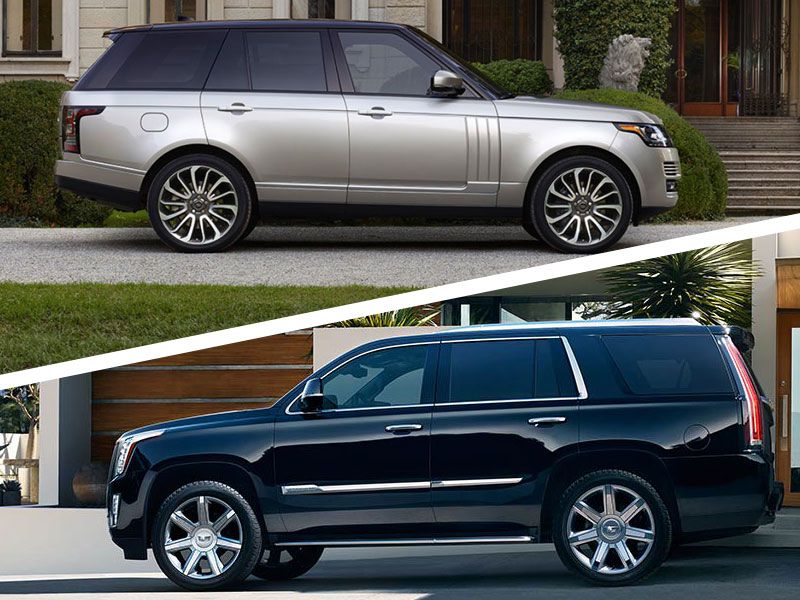
2017 Land Rover Range Rover vs 2017 Cadillac Escalade exterior profile ・ Photo by Land Rover / Cadillac
Both the 2017 Cadillac Escalade and the 2017 Land Rover Range Rover are excellent examples of full-size luxury sport utility vehicles, although each has a different background. The Cadillac is made in America, while the Range Rover is built in England, a part of the world that’s very familiar with high-class transportation, and by a company whose off-roading credentials are unsurpassed. For this model year, the Escalade has new trim names with a little reshuffling of equipment and some new optional features. The Range Rover gains a new SVAutobiography Dynamic trim and an updated infotainment system. Although each model is available with a longer wheelbase, we'll be using the standard versions for our comparison.
Pricing and Trim Levels
The 2017 Cadillac Escalade starts at $74,390 for the base rear-wheel-drive model. Move up to Luxury trim and it starts at $79,390. Premium Luxury begins at $83,890 and the top Platinum trim is priced up from $93,190. The entry level 2017 Land Rover Range Rover comes with a 3.0-liter supercharged V6 and a price tag of $86,645. The next trim level is the HSE trim for $93,645. The Supercharged trim level brings a V8 for $104,880, and to upgrade to the Autobiography trim will start you at $141,990. At the top end, it will take $171,990 to drive off in an SV Autobiography Dynamic. The Range Rover is more expensive but offers greater scope to personalize with the upper two trims. However, due to the significant cost difference in the higher trim levels, we give this segment to the Cadillac for overall pricing options.
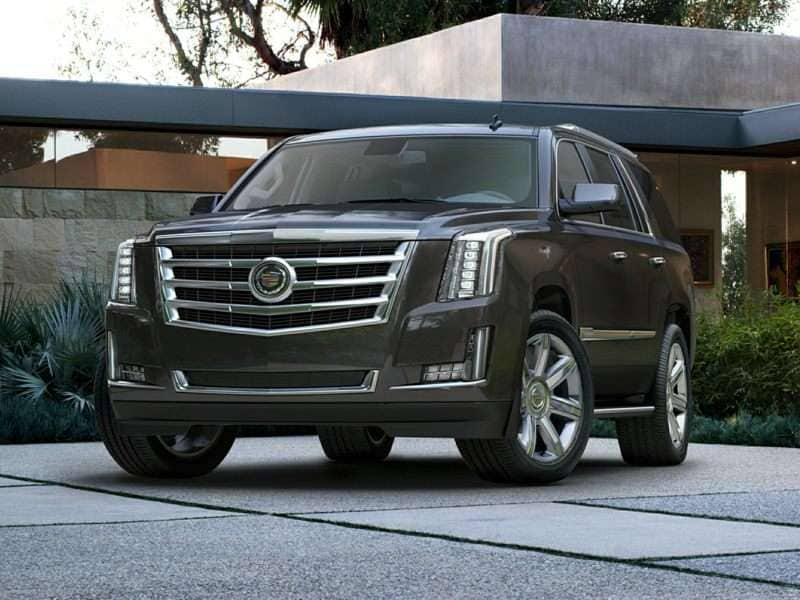
Photo by Cadillac
Equipment
The Escalade’s standard kit includes 20-inch alloy wheels, 3-zone automatic climate control, power liftgate, power-folding third-row seat and 12-way power adjustable front seats, power-adjustable pedals and steering column, navigation, heated steering wheel, and a Bose audio system. The basic Range Rover comes with 10-way power-adjustable front seats, reclining rear seats, gesture-controlled 2-piece liftgate, all-wheel drive, 19-inch alloy wheels, and an excellent Meridian audio system. It’s close, but the money/equipment equation adds up to a Cadillac win in this column as well.
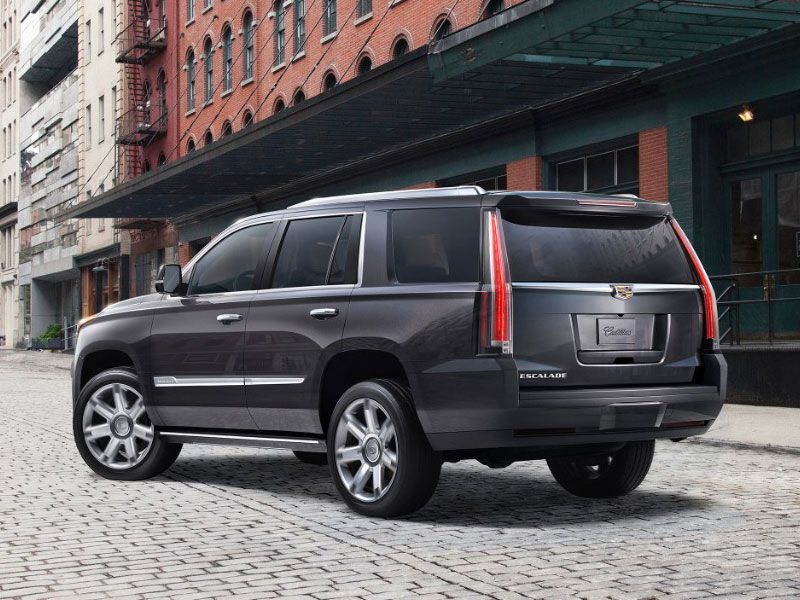
Photo by Cadillac
Optional Features
To bring all-wheel drive into an Escalade costs an extra $2,000, while the same amount of money will get you the Td6 diesel engine in the base or HSE trim levels of the Range Rover.
Concerning additional available trim levels, there are options with both vehicles depending on cost and preference. In the Escalade, as you go up a trim level that means better safety equipment, nicer leather, rear folding tables, and heated/ventilated front seats with 18-way power adjustment. On the Range Rover, higher trim levels offer an even smarter terrain response system and 21-inch wheels, along with amenities similar to the Escalade. For this category, both vehicles offer great upgrades, and we are calling it a tie.
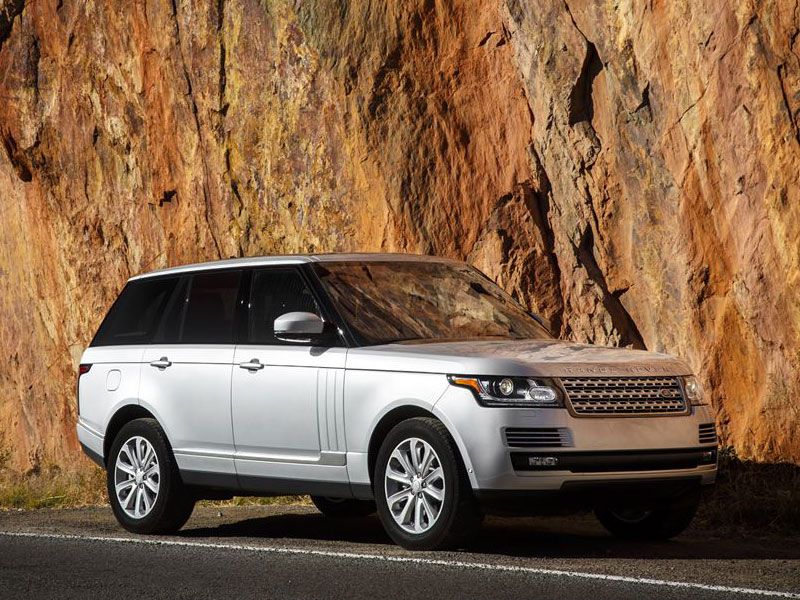
Photo by Land Rover
Powertrains
The Escalade has one engine, a 6.2-liter V8 delivering a respectable 420 hp and 460 lb-ft of torque connected to an 8-speed automatic transmission, driving either the rear wheels or all four. The Range Rover’s base engine is a supercharged 3.0-liter V6 making 340 hp and 332 lb-ft of torque. The lower trims can also be upgraded to a 3.0-liter turbocharged diesel V6 for 254 hp and 440 lb-ft of torque. For those looking for even more power, a 5.0-liter supercharged V8 generates 510 hp and 461 lb-ft, or 550 hp and 502 lb-ft of torque. Every version uses an 8-speed automatic transmission and has all-wheel drive as standard. Choices plus power equals a Range Rover win here.
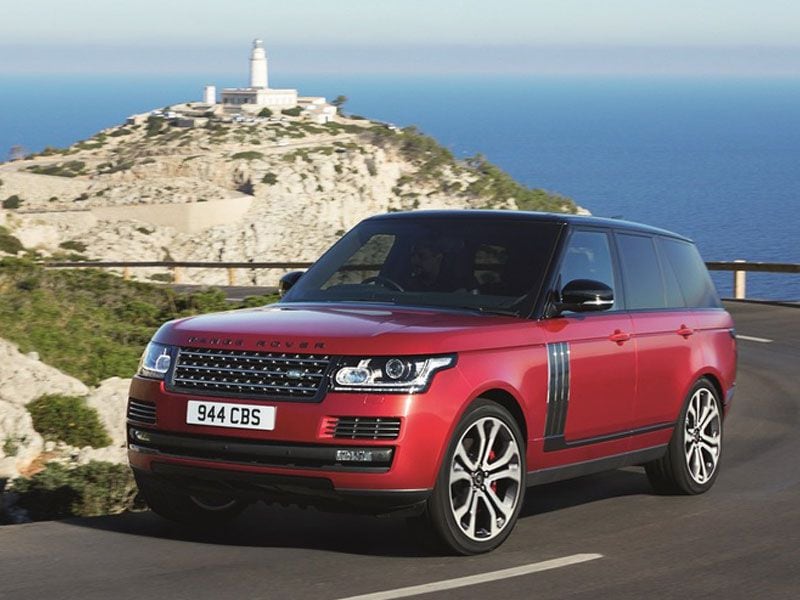
Photo by Land Rover
Fuel Consumption
The Environmental Protection Agency (EPA) estimates that the Escalade with rear-wheel drive achieves 15 mpg city, 22 mpg highway and 17 mpg combined. Add all-wheel drive, and those numbers are 15/20/17 mpg. The Range Rover’s supercharged gasoline V6 returns 17/23/19 mpg (regardless of output,) and the gasoline V8 manages 14/19/16 mpg (also regardless of output). The diesel engine delivers a relatively impressive 22/28/24 mpg. Both Range Rover V6 engines are more frugal than the Escalade while the V8 is only a little thirstier, which we’re sure most potential buyers could accept. And it has a supercharger, so it’s a win for the Range Rover here.

Photo by Land Rover
Off-Road Features
The Escalade's optional all-wheel drive system comes with a low-range transfer case, which will help whenever it needs to go off-road, and also offers a trick rearview mirror that displays what’s captured by the rear-facing camera. A driver can see more of what’s going on behind without obstructions caused by rear pillars or passengers. The Range Rover has a terrain response system that has different settings for various surfaces. It will automatically finesse engine and transmission responses, ride height, and brakes to conquer tricky terrain. The SVAutobiography comes with the 550-hp V8 and a more “sporty” suspension, although still very comfortable. Advantage: Range Rover.
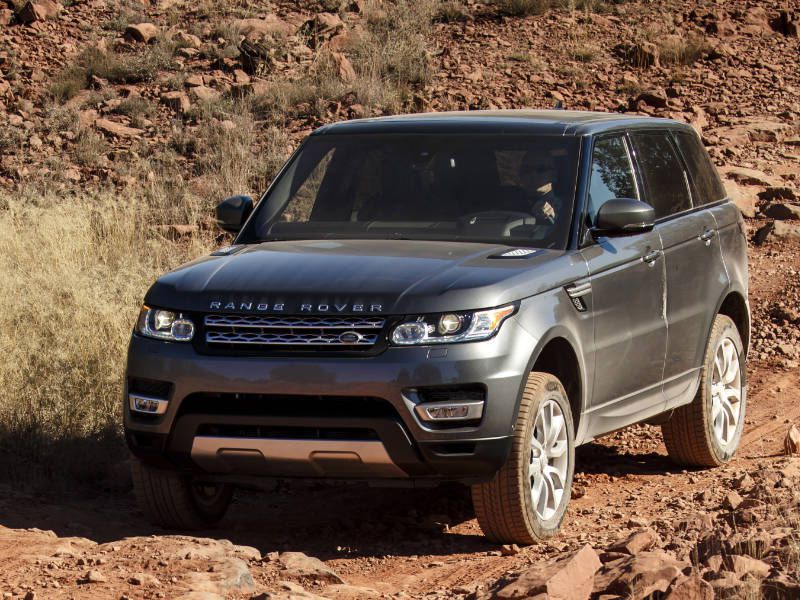
Photo by Land Rover
Exterior Design
Cadillac is no slouch in the design area. Its cars and crossovers have a distinct visual language that’s well thought-out and artfully applied. The Escalade is big and its styling seems to make it even bigger; it’s imposing and makes no apologies for it. You have to love a vehicle with this kind of attitude. We could describe the Range Rover’s styling as “authoritative yet understated.” It echoes the first generation, which was recognized as an excellent piece of industrial design but was hastily drawn by a couple of engineers. Over the generations, it’s become more upmarket, more streamlined, and the 2017 version has a recognizable LED headlight motif. It’s all in the eye of the beholder and buyer, so no winner here.
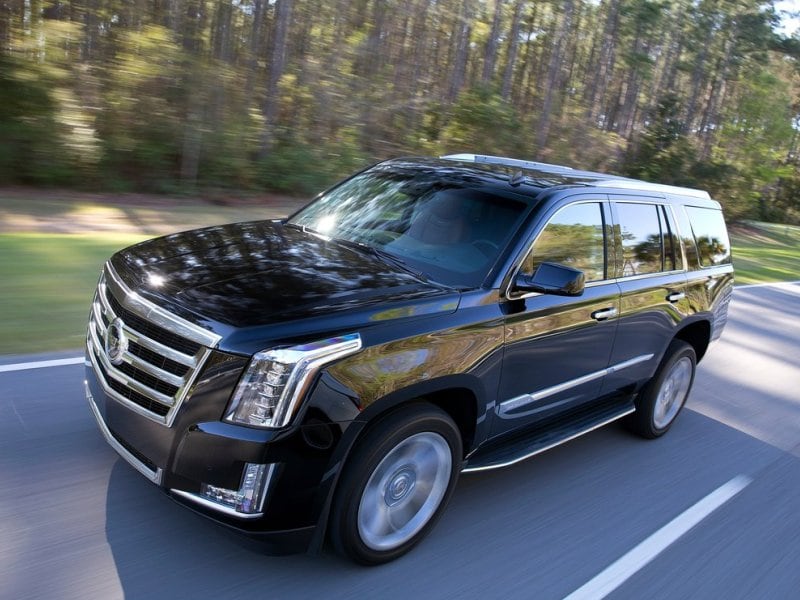
Photo by Cadillac
Interior Design
The Escalade’s cabin approaches gaudy, with a center console that’s a bit too visually arresting, with the leathers, plastics, and wood veneers looking a bit too shiny to convince onlookers of their quality. By comparison, the Range Rover’s cabin is simple, elegant and classy, with fine materials wherever you lay an eye. In the Autobiography trims, it’s possible to order things like diamond-patterned stitching for the leather upholstery and select wood accents from various species. For that feeling of driving a true luxury vehicle, we’re handing this category to the Range Rover.
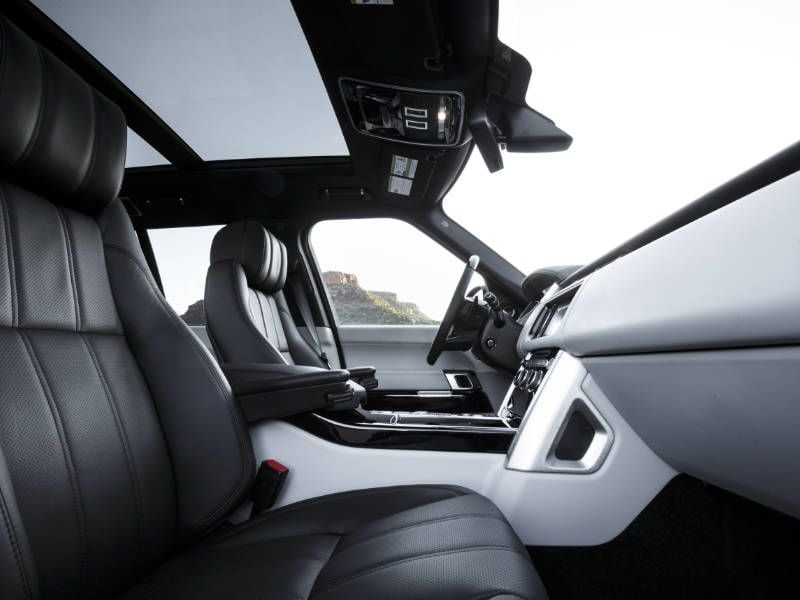
Photo by Land Rover
Comfort
The Escalade can seat seven, whereas the Range Rover accommodates only five, so if seating is a priority, the Escalade is a clear choice, although the third row is best for young ones. Otherwise, it boils down to taste. These are both in the upper reaches of luxury vehicles, so comfort levels are lavish. The Escalade has an adaptive “magnetic ride control” suspension as standard; the Platinum trim’s front seats have a massage function. The Range Rover has an air suspension as standard, which raises or lowers itself automatically depending on conditions — rocky path or smooth freeway. The Range Rover enjoys a maximum ground clearance of 11.6 inches compared with the Cadillac’s eight inches if anyone goes off-road. Call this another tie.

Photo by Land Rover
Cargo Capacity
Behind the Escalade’s third row of seats is 15.2 cubic feet, and behind row two is 51.6 cubic feet. When both back rows are folded down, that opens up to 94.2 cubic feet. The Range Rover’s regular cargo space is 32.1 cubic feet, expanding to 71.7 cubic feet when the rear seats are folded down (sadly, they don’t go completely flat). The Escalade’s maximum towing capacity is 8,300 pounds (rear-wheel drive,) which are where we see the advantage of the American vehicle’s body-on-frame construction, as the unibody Brit cannot pull more than 7,716 pounds. It’s a home run for Cadillac in this section.
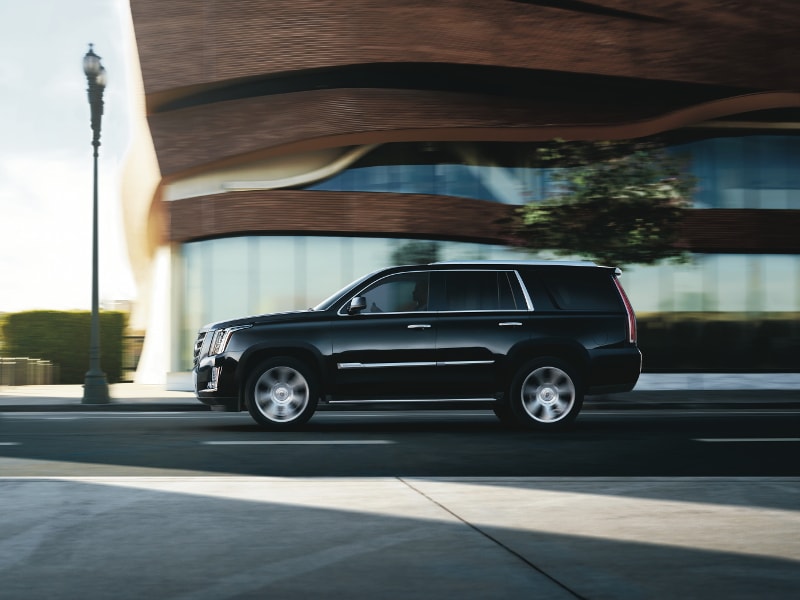
Photo by Cadillac